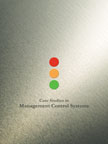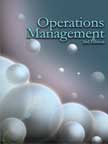Operations Management




Details
Textbook:
Pages : 329;
Paperback;
210 X 275 mm approx.
Workbook:
Pages :
239; Paperback;
210 X 275 mm approx, Sample Applied Theory Questions
Courier charges extra
Pricing
Textbook Price: Rs. 900;
Workbook Price: Rs. 700;
Available only in INDIA
Detail Table of Contents
Click below to view
HTML
Buy Now
Please allow 5 to 10 days for delivery.

Detail Table of Contents
Click below to view
HTML
<< Chapter 5
Facility Location and Layout : Chapter 6
SUMMARY:
Location decisions are the strategic decisions that require large financial investments and they are irreversible in nature. A number of factors like market related factors, tangible or cost factors and intangible or qualitative factors, affect and are affected by the location choice. Models and techniques such as break-even analysis, factor rating technique, transportation method of linear programming, center of gravity method, and analytical Delphi method help managers in making location decisions. Since these models work on quantitative basis; therefore the influence of qualitative factors should be considered by managers to decide the location choice.
The physical disposition of the facilities of a plant is referred to as the plant layout. The basic types of layouts are: process layout, product layout, fixed-position layout, cellular manufacturing layout and hybrid
|
|
layout.
A process layout is the layout in which similar machinery are grouped together. In product layout the machines are arranged according to the progressive steps by which a product is made. In a group technology layout, dissimilar machines are grouped into cells, and each cell functions like a product layout within a larger job shop or process layout. In a fixed layout, all the necessary men, materials, and equipment are brought to a fixed location where the product is actually manufactured. A hybrid or combination layout constitutes combination of two or three types of layouts.
In case of designing service layouts, there exist two types based on the degree of customer contact. One is designed around the customer service and the other around the technology, processing of physical materials, and production efficiency.
Facility Location and Layout - An Overview
Importance of Location
Factors Affecting the Location Decisions
Market Proximity
Integration with Other Parts of the Organization
Availability of Labor and Skills
Site Cost
Availability of Amenities
Availability of Transportation Facilities
Availability of Inputs
Availability of Services
Suitability of Land and Climate
Regional Regulations
Room for Expansion
Safety Requirements
Political, Cultural and Economic Situation
Regional Taxes, Special Grants and Import / Export Barriers
General Steps in Location Selection and Location Decision Process
Define the Location Objectives and Associated Constraints
Identify the Relevant Decision Criteria
Relate the Objectives to the Criteria Using Appropriate Models
Do Field Research to Get Relevant Data and Use the Models to Evaluate the Alternative Locations
Select the Location that Best Satisfies the Criteria
Location Evaluation Methods
Cost-Profit-Volume or Break-Even Analysis
Point Rating Method
The Transportation Method of Linear Programming
Center of Gravity Method of Plant Location
Analytic Delphi Method
Locating Service Facilities
Facility Layout
Criteria for a Good Layout
Basic Layout Formats
Process Layout
Product Layout
Grouping Technology Layout
Fixed Position Layout
Hybrid Layouts
Developing a Process Layout
Graphic and Schematic Analysis
Computer Models – CRAFT
Load Distance Model
Developing a Product Layout
Line Balancing
Mixed-model Line Balancing
Developing a Cellular Manufacturing Layout
Japanese Approaches and Trends in Manufacturing Layouts
Service Facility Layouts
Related Case Books:-
 Case Studies in Management Control Systems
Case Studies in Management Control Systems
20 Case Studies
490 pages, Paperback,
Available only in
INDIA

Related Textbook:-
 Project Management Textbook
Project Management Textbook
528 pages, Paperback;
210 X 275 mm approx,
Price:
Rs. 900 ;
Available only in
INDIA





